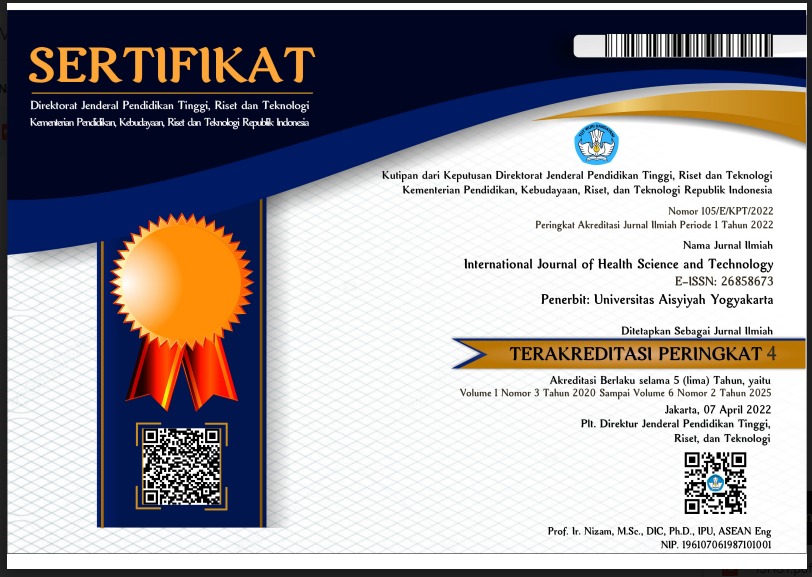The correlation between laboratory skills frequency and the result of intranatal care practicum of midwifery program students of health faculty in Universitas Muhammadiyah Banjarmasin
DOI:
https://doi.org/10.31101/ijhst.v1i2.1101Abstract views 1384 times
Keywords:
Skills lab frequency, evaluation result, and laboratory tests resultAbstract
Downloads
References
Anwar, G. M., Hanna, M. A., El Derwi, D. A., Lotfi, H. M. & Elgebaly, H. F. (2013).Establishment of First Skills Lab in Pediatric Department – Kasr Alainy School of Medicine. Egypt. Pediatr. Assoc. Gaz. 61, 1–6 .
Arikunto, Suharsimi. (2013). Dasar-Dasar Evaluasi Pendidikan. Bumi Aksara: Jakarta
Coast, E., Jones, E., Portela, A. & Lattof, S. R. (2014). Maternity care services and culture: a systematic global mapping of interventions. PloS One 9, e108130.
Edwards, J. E. & Hanke, J. C. (2013). An update on maternal mortality and morbidity in the United States. Nurs. Womens Health 17, 376–388.
Health (UK).(2014). Intrapartum Care: Care of Healthy Women and Their Babies During Childbirth. (National Institute for Health and Care Excellence (UK), 2014).
Slamento. (2010). Belajar & Faktor-Faktor yang Mempengaruhinya. Rineka Cipta: Yogyakarta
Syah, Muhibin. (2005).Psikologi Pendidikan. Bandung: Remaja Rosdakarya
Soliman, M. M. & Fouda, K. (1997). Students’ Perception of One Technical Working Group, World Health Organization. Care in Normal Birth: A Practical Guide. Birth 24, 121– 123.
Utz, B., Kana, T. & van den Broek, N. (2015). Practical aspects of setting up obstetric skills laboratories – A literature review and proposed model. Midwifery 31, 400–408.
Y
ear Experience with the Clinical Skills Laboratory at King Saud University Medical College. (2008). J. Taibah Univ. Med. Sci. 3, 140–147.
Downloads
Published
How to Cite
Issue
Section
License
International Journal of Health Science and Technology allows readers to read, download, copy, distribute, print, search, or link to its articles' full texts and allows readers to use them for any other lawful purpose. The journal allows the author(s) to hold the copyright without restrictions. Finally, the journal allows the author(s) to retain publishing rights without restrictions
- Authors are allowed to archive their submitted article in an open access repository
- Authors are allowed to archive the final published article in an open access repository with an acknowledgment of its initial publication in this journal

This work is licensed under a Creative Commons Attribution-ShareAlike 4.0 Generic License.













